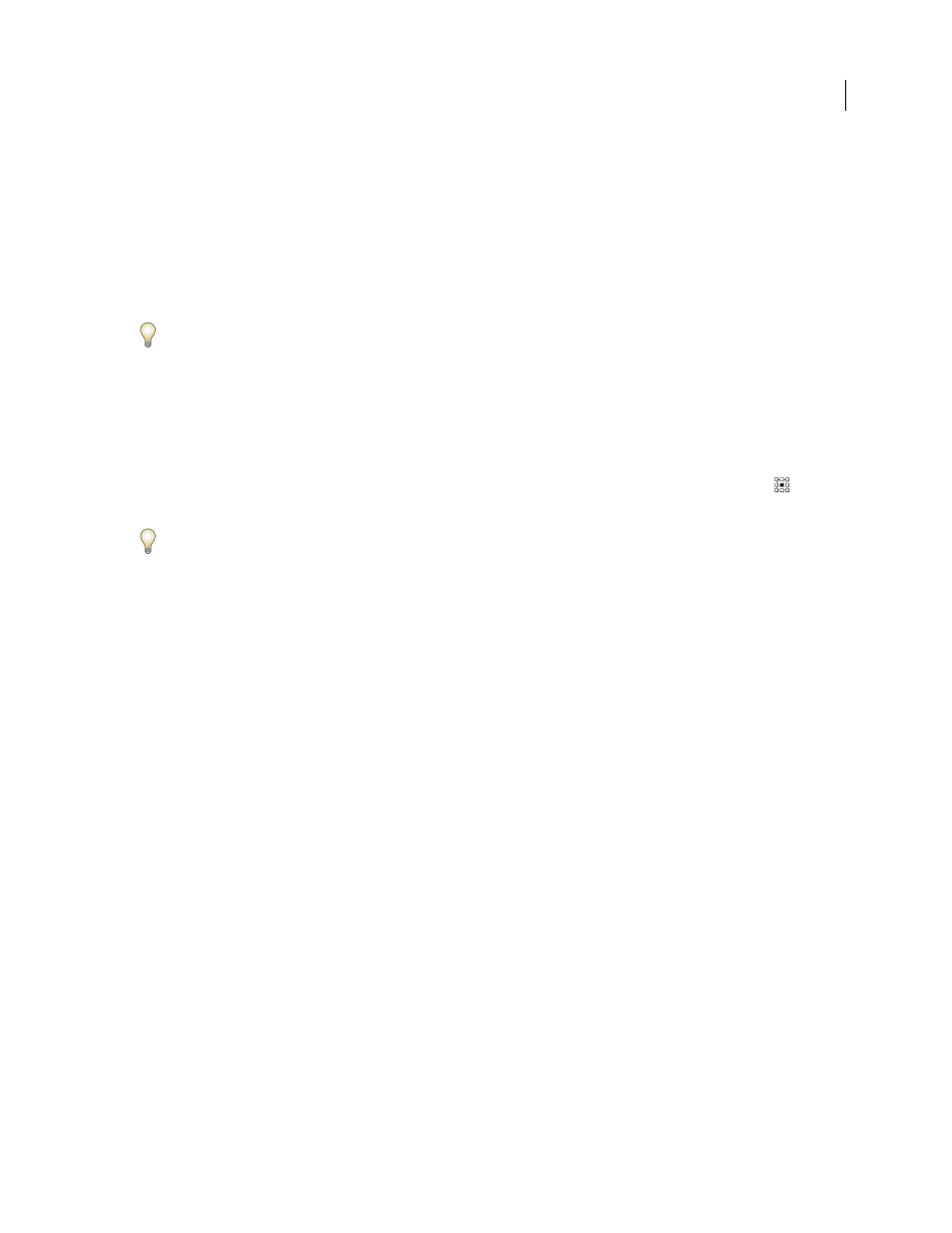Rotate the x and y axes of a document – Adobe Illustrator CS3 User Manual
Page 214

ILLUSTRATOR CS3
User Guide
208
•
To rotate around a different reference point, select the Rotate tool. Then Alt-click (Windows) or Option-click
(Mac OS) where you want the reference point to be in the document window.
3
Enter the rotation angle in the Angle text box. Enter a negative angle to rotate the object clockwise; enter a positive
angle to rotate the object counterclockwise.
4
If the objects contain a pattern fill, select Patterns to rotate the pattern. Deselect Objects if you want to rotate the
pattern but not the objects.
5
Click
OK, or click Copy to scale a copy of the objects.
To place multiple copies of the object in a circular pattern around a reference point, move the reference point away
from the center of the object, click Copy, and then repeatedly choose Object > Transform
> Transform Again.
Rotate an object with the Transform panel
1
Select one or more objects.
2
Do one of the following:
•
To rotate the object around its center point, enter a value for the Angle option in the panel.
•
To rotate the object around a different reference point, click a white square on the reference point locator
in
the panel, and enter a value for the Angle option.
You can also call up the Transform panel by clicking X, Y, W, or H in the Control panel.
Rotate multiple objects individually
1
Select the objects to rotate.
2
Choose Object > Transform
> Transform Each.
3
Do either of the following in the Rotate section of the dialog box:
•
Click on the angle icon or drag the angle line around the icon.
•
In the Angle text box, enter an angle between –360˚ and 360˚.
4
Click
OK, or click Copy to rotate a copy of each object.
Rotate the x and y axes of a document
By default, the x and y axes are parallel to the horizontal and vertical sides of the document window.
1
Choose Edit > Preferences > General (Windows) or Illustrator > Preferences > General (Mac OS).
2
Specify an angle in the Constrain Angle text box. A positive angle rotates the axes counterclockwise; a negative
angle rotates the axes clockwise.
Rotating the axes is useful if your artwork consists of elements that are rotated to the same angle, such as a logo and
text displayed on a 20˚ angle. Instead of rotating each element you add to the logo, you can simply rotate the axes by
20˚. Everything you draw is created along the new axes.
